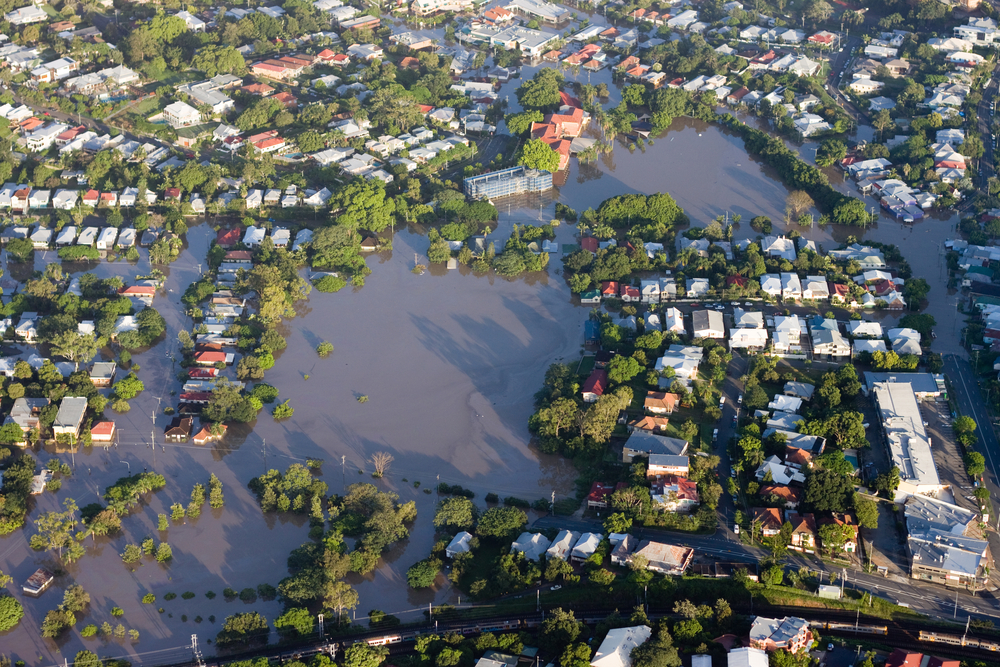
Climate change is already happening and having an impact on physical hazards, such as flood, around the world, bringing into question the impact on the mortgage industry’s long-term lending against property assets.
Our team of scientists has contributed to leading research on this topic, with one research paper providing evidence that greenhouse gas emissions had already increased the likelihood of flooding during the Winter 2013/2014 event in Great Britain.
Added to these findings, JBA’s own data suggests that over one million more properties in Great Britain will be at risk of a 200-year flood event by 2040 under a realistic warming scenario, with UK residential properties facing an increase of up to 30% in average annual losses from flood under the same scenario.
But what does this mean for the mortgage market?
With upcoming regulatory moves in the UK, Europe and globally, there are significant pushes for the mortgage sector to consider climate risk.
The Prudential Regulation Authority’s (PRA’s) Climate Biennial Exploratory Scenario (CBES) in June will require the top 10 largest banks and building societies to assess and report on climate risk – both the physical impacts such as increased flood risk, and the transitional impacts such as moving to greener energy and investments.
Beyond this, the Task Force on Climate-related Financial Disclosures (TCFD), set up by the Financial Stability Board and supported by the G20, expects all large firms to be reporting against climate change by 2025, and the PRA has already set out an expectation that all firms will have embedded their approach to climate risk by the end of this year.
However, beyond this push from regulators, understanding the impact of climate change on physical hazards like flood makes good business sense for both lenders and their customers. We know that flooding is likely to increase in both severity and frequency in the future, leading to impacts on property risk – a clear cause for concern for mortgage providers with the potential to impact property values, risk of mortgage default, loan to value rates, changes to insurability and more.
Banks and lenders need to start considering the long-term impact of climate change during mortgage assessments to ensure solvency, long-term profitability, and overall resilience. For example, a property may not be at risk to flood now, may only be at minor risk, or even have no history of flooding, but how does that risk change over the term of a mortgage?
Will the financial pressure of repeated or severe flood events in the future have an impact on a homeowner’s ability to pay their mortgage? If a mortgage is defaulted, will the lender to able to retrieve their investment following its sale?
Lenders also need to take a broader view of their back-book to consider impairment charge assessments and understand how their previous investments stand up to climate change scrutiny. What revenue might be needed to cover additional costs that come to light due to climate change impacts on earlier investments?
Similarly, which locations may become particular areas of concern and need further consideration during future decisions to limit any further loss?
Managing the risk appropriately, of course, is the cornerstone of responsible lending. Lenders have a responsibility to protect their customers and ensure they are making safe lending decisions for the future, including an understanding of not only the risk at the point when the decision is made, but how this risk may change in the future – purchasing a property is, for many homeowners, a lifetime investment.
Part of this includes mortgage providers, and homeowners, understanding the potential flood risk to a property and the impacts this may have on insurability over the longer term. The largest banks, building societies and insurers must participate in the PRA’s stress test this year, recognising the interplay between different players in the finance sector and the need for lenders and insurers to assess risk consistently.
The capacity to obtain home insurance is a requirement at mortgage origination and often taken as a metric for risk. The existence of Flood Re, however, changes the link between risk and insurability for flooding. Under the Flood Re scheme, a property at significant risk to flood may be able to obtain insurance but might still be at risk to potential devaluation or higher chance of mortgage default from the perspective of a mortgage provider.
Similarly, the Flood Re scheme is due to end in 2039, so mortgage providers must consider how insurability may change and how the potential loss of this insurance for high risk properties might impact investments longer term. Banks and lenders need to perform their own risk assessments, using data in line with the insurer’s risk assessment, to understand the real risk rather than taking insurability as a metric itself.
Assessing the impact of potential flooding on a lender’s portfolio is a challenging exercise, but a necessary one. The demands we see from firms are very varied: different companies seek information about different time horizons and for different climate scenarios; and the type of information that users can ingest and use in their daily business is highly variable.
Which is of course where JBA comes in – our recently developed Climate Change Analytics are designed to encompass not only the full range of Representative Concentration Pathways demanded by the regulator, but also every five-year time period from 2025 until the end of the century, providing a comprehensive view of future flood risk.
Vanessa Balmbra
Climate change is already happening. Now is the time for lenders to plan and identify how future hazards will impact their books – using the best data and analysis is essential.
Vanessa Balmbra is property and financial sector specialist at JBA Risk Management



